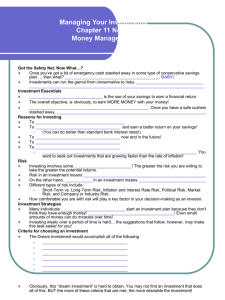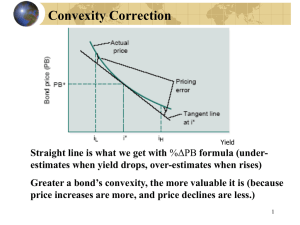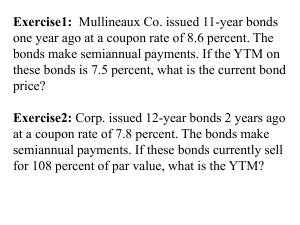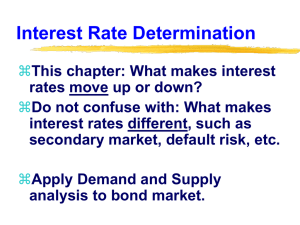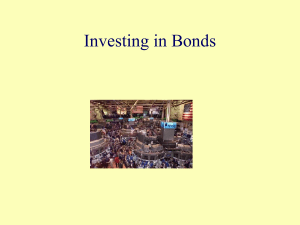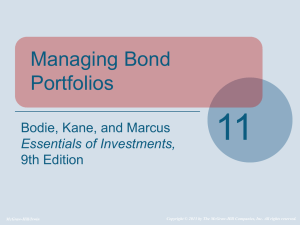Bonds and Fixed Income Securities
advertisement
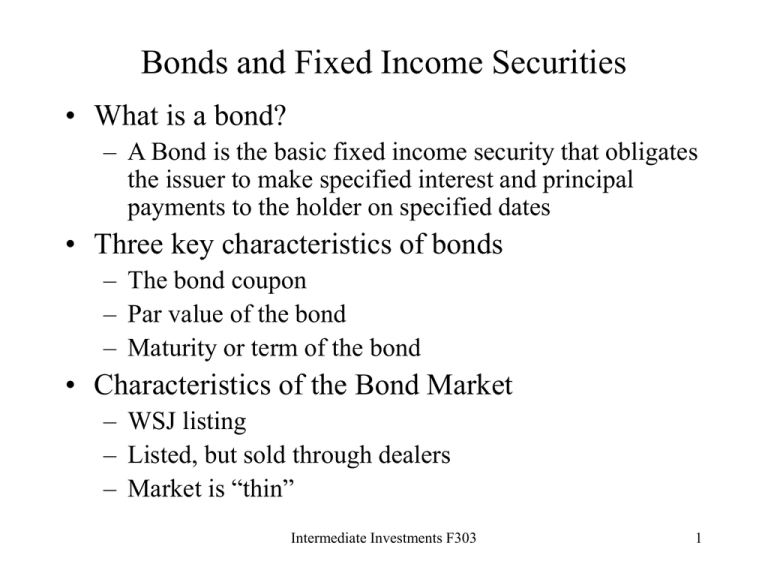
Bonds and Fixed Income Securities • What is a bond? – A Bond is the basic fixed income security that obligates the issuer to make specified interest and principal payments to the holder on specified dates • Three key characteristics of bonds – The bond coupon – Par value of the bond – Maturity or term of the bond • Characteristics of the Bond Market – WSJ listing – Listed, but sold through dealers – Market is “thin” Intermediate Investments F303 1 Types of Bonds • • • • • • • • • Pure Discount or Zero Coupon Bonds – Coupon Bonds – Perpetual Bonds – Self Amortizing Bonds – Convertible Bonds – Putt-able Bonds – Floating Rate Bonds – Foreign Bonds – Eurobonds – Intermediate Investments F303 2 Who Issues Bonds? • The Federal Government – – – – Treasury bills Treasury notes Treasury bonds Treasury strips • Agency Bonds – Mortgage backed bonds • Municipal Bonds • Corporate Bonds – Secured bonds – Debentures Intermediate Investments F303 3 Bond Pricing • Bond Pricing – price is based on the present value of the stream of income to the bondholder. There are two streams on income, the coupon payments and the par value of the bond at maturity Bond Value = PV of coupon payments + PV of Par Value • Assume one market interest rate for all periods Discount rate = real risk free rate + inflation factor + risk premium (see bond calculator example) Intermediate Investments F303 4 Bond Yields Defined • Current Yield • Yield to Maturity • Bond Equivalent Yield • Effective Annual Rate Intermediate Investments F303 5 Bond Yields – An Example • Consider the following bond: – – – – Coupon rate Term Par Value Current price 8% 30 years $1,000 $1,276.76 • What is the: – – – – Current Yield? Yield to Maturity? Bond equivalent Yield? Effective Annual Yield? Intermediate Investments F303 6


